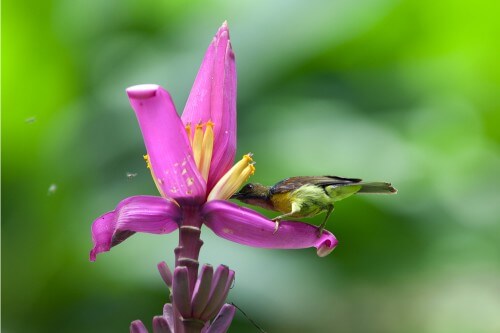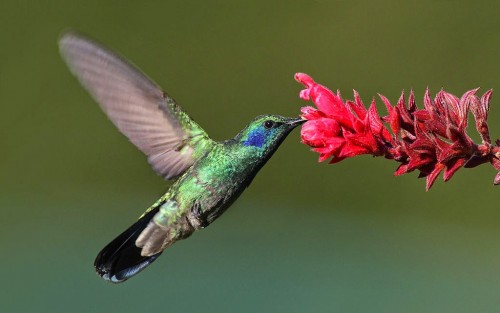The fact that the scout hovers over one flower, and flies very quickly and suddenly to another flower is impressive, but also raises questions about its flight mechanism. Is it possible to imitate the efficient flight mechanism of the tiny bird with an artificial aircraft, such as a helicopter?

By: Dafna Haim Langford
The fact that the scout hovers over one flower, and flies very quickly and suddenly to another flower is impressive, but also raises questions about its flight mechanism. Is it possible to imitate the efficient flight mechanism of the tiny bird with an artificial aircraft, such as a helicopter?
The scout, also known as the hummingbird, belongs to the smallest bird species. However, the scout's impressive flight speed and hovering ability aroused great curiosity. Researchers found that the small bird is able to move its wing dozens of times in one second (between 50-80), a fact that allows it to reach a speed of over 50 km/h. While flying, it was measured that her heartbeats reach 1,260 per second, which means that the scout's metabolic rate is so fast that she must eat several times very much and in fact eat a weight equal to her body weight every hour. At night, in order not to starve, the scout's metabolism drops significantly and she is actually in a metabolic state similar to hibernation.
For some time, scout flight has aroused interest among scientists, some thought that the scout flight is similar to the flight of insects, while others claimed that the scout flight is similar to the flight of birds when the wing is used as a kind of blade. Through an aerodynamic simulation of the scout's flight in XNUMXD, it was found that the scout reaches its aerobatic capabilities through a system of aerodynamic forces that are more similar to the aerodynamic forces that characterize the flight of insects, than to those that characterize the flight of birds.
In order to hover above the flower, the scout requires sufficient lift. While other birds use wing flapping, the lifting force in this case, does not originate from a fast flapping of wings, but a much more sophisticated mechanism: the scout makes use of air flow mechanics characterized by instability, this causes invisible air vortices that create the lifting force the scout needs in order to hover and flutter between flower to flower.

For example, the direction of the wings forward and down creates small vortices that join a larger vortex - an area with low pressure that allows lift. In addition, the small birds increase the lifting force by fine tuning the wings in the desired direction.
Another interesting difference between the scouts and their bird sisters is their ability to turn the wing and create reverse lift when needed. Although scouts are much larger than the average flying insect and stir up the air much more than the insect while in motion, scout flight is closer to insect flight than to bird flight.
Insects such as dragonflies, flies and mosquitoes can hover and dart forward, backward and sideways. The structure of their wings is very different from the wings of the scout and it contains a thin membrane and no feathers. Insects also make use of a mechanism of unstable air flow that causes eddies that produce lift force necessary for flight. The insect's wings also move so that they can create bilateral positive lift.
Following the modeling of the Scout's impressive flight mechanism, various groups of researchers/developers are trying to learn how the Scout's fast and efficient flight can be implemented in miniaturized aviation systems for both civilian and military needs.
The flight of the scout - slow motion
Girl Scout vs. Bugs

5 תגובות
Strange,
that despite the great progress made in photographic techniques,
and the ability to shoot at a speed exceeding one hundred meters,
the qualities of human vision,
Still unable to understand the complexity of wing movements.
It reminds me of the first attempts to imitate the flight of birds,
When they attached wings to humans, which moved up and down without changing the angle...
Unlike the hummingbird, the scout prefers to stand near the flower from which she sucks the nectar. Also, its flight technique is different from the hummingbird.
In the past I wrote about the confusion in names and yet again and again
They continue to write in folk-science places to make mistakes and mislead,
According to the video clips, the entire article refers to: hummingbird.
The hummingbird is from the Trochilidae family
(several types and species) birds from Central and South America,
Another type (number of species) and completely different is Cinnyris Scout from the "Old World"...
Because of the translation of the name from German, the scout was called the hummingbird, a name that was changed to: scout.
Therefore again:
There is a girl scout in our neighborhood.
In America Colibri.
The entire article refers to the hummingbird and the use of "scout"... that's rude!
Too bad !
A scout is not a hummingbird, you should be precise!! The hummingbird belongs to the Colibri and is common in the New World rather than the Old.